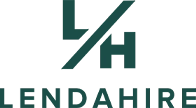The Digital Age Dilemma
In the bustling digital marketplace of today, your website stands as a beacon of your brand’s identity, values, and offerings. But as we navigate through the vast expanse of the internet, a new challenge emerges from the shadows: the risk of content scraping and unauthorized data use. With the rise of advanced technologies like ChatGPT, the threat looms larger, posing a significant concern for marketing specialists and business owners alike. How do you protect the digital fortress that houses your brand’s essence? The answer might be simpler than you think.
The Shield Against Unwanted Digital Prowlers
The advent of ChatGPT and similar technologies has ushered in an era of unprecedented convenience and efficiency in accessing and processing information. However, this boon comes with its bane – the ease of scraping and mimicking website content without consent. The LinkedIn post we’re delving into today offers a straightforward yet effective strategy to safeguard your digital domain from such unwarranted intrusions. By the end of this exploration, you’ll be equipped with actionable insights to not only protect your website but also ensure that your brand’s integrity remains uncompromised.
What’s in It for You: The Benefits Unveiled
Fortifying Your Digital Presence
Implementing the steps outlined in the LinkedIn post fortifies your website against potential threats posed by automated technologies. This protective measure ensures that your content remains unique to your domain, preserving its originality and the value it offers to your audience.
Maintaining Brand Integrity and Trust
By preventing unauthorized content scraping, you safeguard your brand’s integrity. This proactive approach demonstrates to your customers and clients that you value and protect your intellectual property, thereby bolstering trust and loyalty.
Enhanced Competitive Edge
In a landscape where information is power, keeping your strategic content exclusive to your website can provide a competitive advantage. It prevents competitors from easily accessing and leveraging your insights, strategies, and innovations for their gain.
Avoiding Unwanted Data Harvesting
Data privacy concerns are at an all-time high. By restricting automated access to your site, you minimize the risk of your data being harvested and used without your permission, aligning with best practices for data protection and privacy.
Embracing Innovation while Setting Boundaries
In navigating the vast and ever-evolving digital landscape, the intersection of innovation and privacy often sparks heated debate. The proactive steps we take to shield our online content, as detailed earlier, underscore a broader, more controversial discourse: the delicate balance between leveraging cutting-edge AI technologies and safeguarding our digital sanctuaries. It’s a testament to our dual pursuit of progress and protection, acknowledging that while the advancements in AI like ChatGPT open doors to unimaginable possibilities, they also usher in challenges to privacy and intellectual property rights. This conversation isn’t about thwarting the march of technology; it’s about molding it to fit within ethical boundaries that respect both creators and consumers alike.
This nuanced stance invites a reflection on our responsibilities as stewards of the digital domain. Are we to blindly ride the wave of technological advancement, or should we pause to set anchors that ensure these powerful tools do not erode the very fabric of our digital privacy and security? By implementing measures to protect our content, we’re advocating for a future where innovation does not come at the expense of ethical considerations. It’s about creating a symbiotic relationship between technological advancement and privacy, ensuring that as we step forward into new frontiers of digital capability, we do so with a compass that guides us toward ethical and responsible use. This approach doesn’t just protect our immediate interests but also sets a precedent for future generations navigating the complexities of a digital-first world.
Ethical Innovation and Digital Stewardship
As we wrap up our exploration of safeguarding digital content in the face of advancing AI technologies, it’s clear that this journey is not just about implementing technical safeguards. It’s about fostering a culture of responsible innovation, where the boundaries of digital privacy and content protection are respected and reinforced. The steps outlined to protect your website are more than mere technical fixes; they represent a commitment to ethical digital stewardship. By choosing to proactively defend your online realm, you’re not just securing your brand’s unique voice and content; you’re also championing the cause of digital ethics, setting a standard for how technology should be harmoniously integrated into our professional and personal lives.
In conclusion, the conversation around protecting our digital content from the likes of ChatGPT and similar AI technologies is a microcosm of the larger dialogue on the ethical use of technology. It’s a reminder that in our quest for innovation, we must not lose sight of the values that define us: privacy, integrity, and respect for intellectual property. As technology continues to evolve, so too must our strategies for safeguarding the digital landscapes we’ve worked so hard to cultivate. Let’s move forward with the understanding that protecting our online content is not just a technical necessity but a moral imperative, ensuring that the digital future we’re building is secure, respectful, and inclusive for all.






